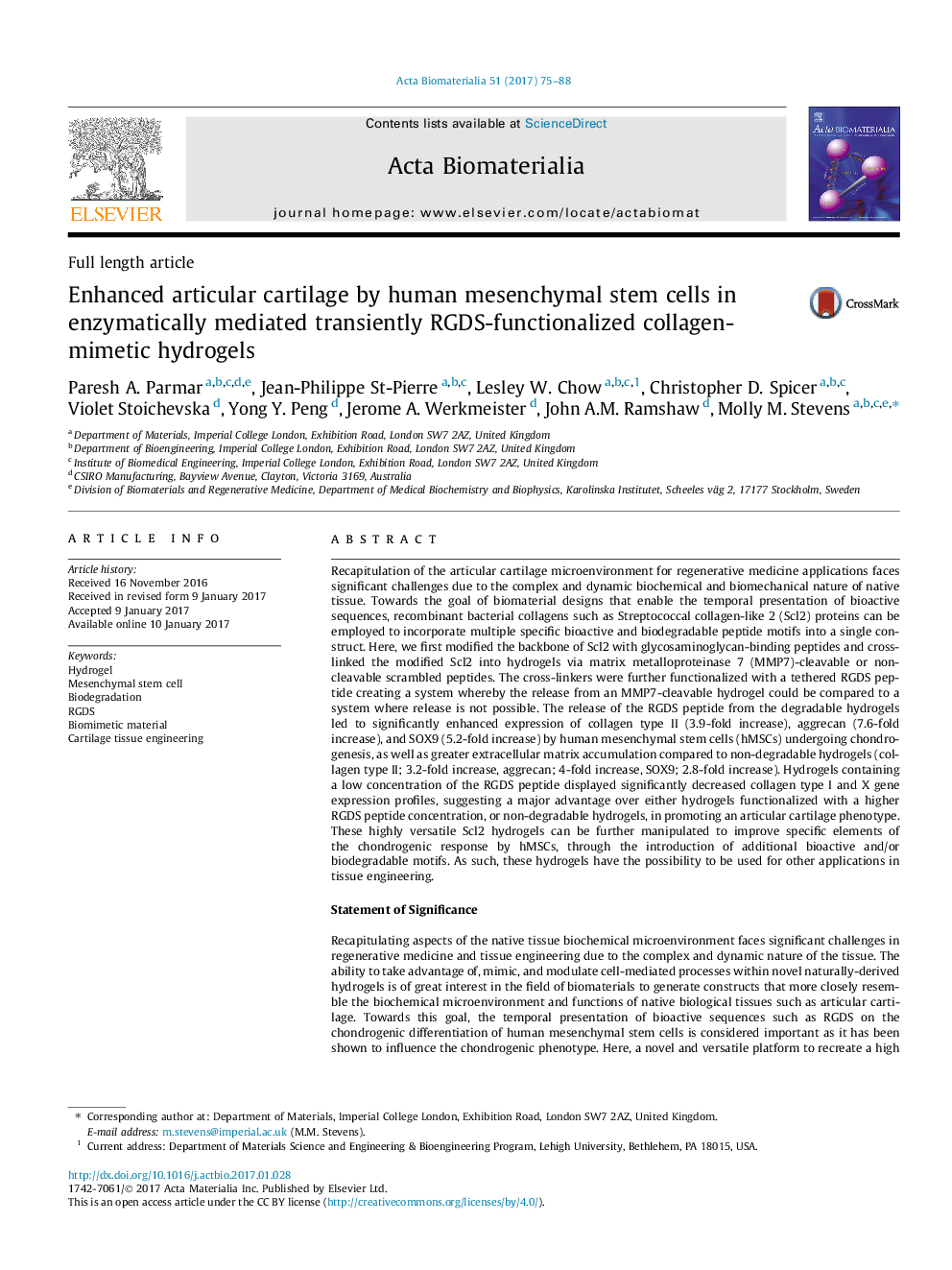| کد مقاله | کد نشریه | سال انتشار | مقاله انگلیسی | نسخه تمام متن |
|---|---|---|---|---|
| 6449464 | 1415935 | 2017 | 14 صفحه PDF | دانلود رایگان |

Recapitulation of the articular cartilage microenvironment for regenerative medicine applications faces significant challenges due to the complex and dynamic biochemical and biomechanical nature of native tissue. Towards the goal of biomaterial designs that enable the temporal presentation of bioactive sequences, recombinant bacterial collagens such as Streptococcal collagen-like 2 (Scl2) proteins can be employed to incorporate multiple specific bioactive and biodegradable peptide motifs into a single construct. Here, we first modified the backbone of Scl2 with glycosaminoglycan-binding peptides and cross-linked the modified Scl2 into hydrogels via matrix metalloproteinase 7 (MMP7)-cleavable or non-cleavable scrambled peptides. The cross-linkers were further functionalized with a tethered RGDS peptide creating a system whereby the release from an MMP7-cleavable hydrogel could be compared to a system where release is not possible. The release of the RGDS peptide from the degradable hydrogels led to significantly enhanced expression of collagen type II (3.9-fold increase), aggrecan (7.6-fold increase), and SOX9 (5.2-fold increase) by human mesenchymal stem cells (hMSCs) undergoing chondrogenesis, as well as greater extracellular matrix accumulation compared to non-degradable hydrogels (collagen type II; 3.2-fold increase, aggrecan; 4-fold increase, SOX9; 2.8-fold increase). Hydrogels containing a low concentration of the RGDS peptide displayed significantly decreased collagen type I and X gene expression profiles, suggesting a major advantage over either hydrogels functionalized with a higher RGDS peptide concentration, or non-degradable hydrogels, in promoting an articular cartilage phenotype. These highly versatile Scl2 hydrogels can be further manipulated to improve specific elements of the chondrogenic response by hMSCs, through the introduction of additional bioactive and/or biodegradable motifs. As such, these hydrogels have the possibility to be used for other applications in tissue engineering.Statement of SignificanceRecapitulating aspects of the native tissue biochemical microenvironment faces significant challenges in regenerative medicine and tissue engineering due to the complex and dynamic nature of the tissue. The ability to take advantage of, mimic, and modulate cell-mediated processes within novel naturally-derived hydrogels is of great interest in the field of biomaterials to generate constructs that more closely resemble the biochemical microenvironment and functions of native biological tissues such as articular cartilage. Towards this goal, the temporal presentation of bioactive sequences such as RGDS on the chondrogenic differentiation of human mesenchymal stem cells is considered important as it has been shown to influence the chondrogenic phenotype. Here, a novel and versatile platform to recreate a high degree of biological complexity is proposed, which could also be applicable to other tissue engineering and regenerative medicine applications.
252
Journal: Acta Biomaterialia - Volume 51, 15 March 2017, Pages 75-88